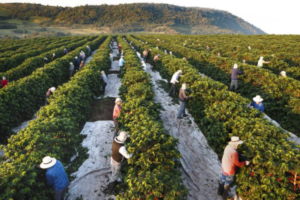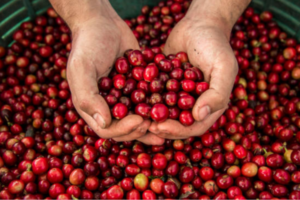Introduction
Coffee is not merely a beverage; it is an intrinsic part of global culture, woven into the fabric of societies across centuries. Originating from the highlands of Ethiopia, coffee has traversed continents, evolving into a symbol of social interaction, intellectual exchange, and economic prowess. This comprehensive exploration of coffee’s journey from bean to cup delves into its origins, historical significance, cultural impact, and modern-day manifestations.
Origins: The Birth of a Brew
The story of coffee begins in the ancient forests of Ethiopia, where indigenous tribes first discovered the energizing effects of the coffee cherry. According to legend, a goat herder named Kaldi observed his goats’ lively behavior after consuming the red berries of a certain shrub. Curious, he sampled the berries himself and experienced heightened alertness. This serendipitous discovery led to the cultivation of coffee plants and the birth of a new beverage.
As coffee gained popularity among Ethiopian monks, its reputation as a stimulant spread across the Arabian Peninsula. By the 15th century, coffee had become an integral part of Islamic culture, with the establishment of the first coffeehouses in Mecca and Medina. These gathering places, known as qahveh khaneh, provided an environment for lively discussion, intellectual debate, and spiritual contemplation.
The tale of Kaldi and his goats is just one of the colorful legends surrounding the discovery of coffee. Historically, coffee’s origins can be traced back to the ancient forests of Ethiopia, where Coffea arabica, the most widely consumed species of coffee, originated. Indigenous tribes in Ethiopia’s southwestern highlands were the first to recognize the stimulating properties of coffee cherries. They ground the cherries into a pulp, mixed it with animal fat, and formed it into energy-boosting balls, providing sustenance for hunters and warriors on long journeys.
The transition from wild fruit to cultivated crop likely began in the Ethiopian region of Kaffa, where coffee trees grew abundantly. Over time, the cultivation of coffee spread to neighboring regions, facilitated by trade routes and cultural exchange. By the 9th century, coffee had become an integral part of Ethiopian culture, with evidence of coffee drinking rituals and ceremonies in monastic communities.
The Spread of Coffee: A Global Phenomenon
The allure of coffee soon reached the shores of Europe, propelled by trade routes and cultural exchange. Venetian merchants introduced coffee to the continent in the 16th century, sparking a craze that would sweep across Europe. The first coffeehouse in Europe opened in Venice in 1645, paving the way for the proliferation of coffeehouses in major cities like London, Paris, and Vienna.
The establishment of coffee plantations in the colonies of the New World fueled the global demand for coffee beans. Countries such as Brazil, Colombia, and Indonesia became major producers, exporting their harvests to satisfy the growing appetite for coffee in Europe and beyond. However, this expansion also led to the exploitation of indigenous peoples and the establishment of coercive labor systems on coffee estates.
The journey of coffee from Ethiopia to the Arabian Peninsula marked the beginning of its global diffusion. Coffee’s popularity in the Islamic world can be attributed to its stimulating effects, which were particularly valued during the long hours of fasting observed during Ramadan. By the 15th century, coffee had become a fixture in Muslim society, with the establishment of coffee.
The introduction of coffee to Europe in the 16th century sparked a cultural revolution, transforming the social landscape of major cities. Coffeehouses, known as “penny universities” for their role as affordable centers of learning, became hubs of innovation and creativity. In London, the emergence of coffeehouses coincided with the rise of the Enlightenment, fostering the exchange of ideas among philosophers, scientists, and writers.houses serving as centers of social, intellectual, and religious activity.
Cultural Significance: Rituals and Traditions
Throughout history, coffee has been more than just a beverage; it has been a catalyst for social interaction and cultural expression. In Ethiopia, the coffee ceremony is a time-honored tradition that brings communities together to share stories, build relationships, and celebrate their cultural heritage. Similarly, the coffeehouses of 17th-century Europe served as incubators for the Enlightenment, fostering dialogue and debate among intellectuals and artists.
In the modern era, coffee continues to be a symbol of hospitality and friendship. Whether it’s the ritual of enjoying a morning cup of coffee with colleagues or meeting friends for a leisurely brunch at a neighborhood cafe, coffee plays a central role in social gatherings around the world. Additionally, coffee has inspired a thriving subculture of enthusiasts who obsess over brewing methods, bean origins, and flavor profiles.
The cultural significance of coffee extends far beyond its role as a stimulant; it is deeply intertwined with rituals, traditions, and social customs around the world. In Ethiopia, the coffee ceremony, known as “buna,” is a sacred ritual that brings families and communities together. The ceremony involves roasting green coffee beans over an open flame, grinding them by hand, and brewing them in a traditional clay pot known as a “jebena.” The aroma of freshly brewed coffee permeates the air as participants engage in lively conversation and bonding.
Similarly, in Turkey, the preparation and consumption of coffee are steeped in tradition and symbolism. Turkish coffee, known for its strong flavor and thick texture, is brewed in a special pot called a “cezve” and served in small cups accompanied by Turkish delight. The ritual of Turkish coffee drinking is an integral part of social gatherings, weddings, and celebrations, symbolizing hospitality and friendship.
Economic Impact: The Coffee Trade
The global coffee industry is a multi-billion dollar enterprise that sustains millions of livelihoods worldwide. From small-scale farmers in developing countries to multinational corporations in the West, coffee production and trade encompass a complex network of actors and interests. However, the coffee supply chain is fraught with challenges, including fluctuating prices, environmental degradation, and social inequality.
The global coffee trade is a complex and dynamic industry that encompasses a wide range of stakeholders, from small-scale farmers to multinational corporations. Coffee is cultivated in over 70 countries, with millions of people relying on coffee production for their livelihoods. However, the coffee industry is also plagued by challenges such as price volatility, environmental degradation, and social inequality.
Small-scale coffee farmers, particularly those in developing countries, face numerous obstacles, including fluctuating market prices, climate change, and limited access to resources and technology. Many coffee-producing regions are vulnerable to the impacts of climate change, including shifts in rainfall patterns, increased temperatures, and the spread of pests and diseases. As a result, farmers are often forced to adapt their cultivation practices or switch to more resilient crops to survive.
Conclusion
From its humble beginnings in the forests of Ethiopia to its ubiquitous presence in cafes and homes worldwide, coffee has left an indelible mark on human civilization. Its journey from bean to cup is a testament to the power of cultural exchange, economic innovation, and human ingenuity. As we savor our daily brew, let us pause to appreciate the rich tapestry of history and culture encapsulated in every aromatic sip of coffee.
From its origins in the ancient forests of Ethiopia to its global ubiquity today, coffee has transcended geographical boundaries and cultural differences to become a unifying force in human society. Its journey from bean to cup is a testament to the ingenuity, resilience, and creativity of generations past and present. As we savor the rich flavors and aromas of our favorite brew, let us not forget the centuries of history and tradition encapsulated in every cup of coffee.



